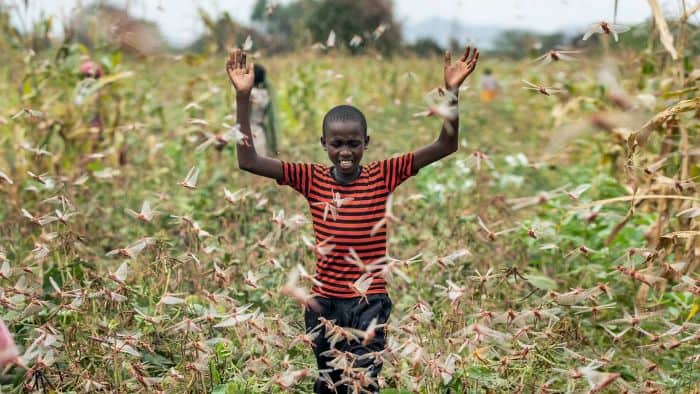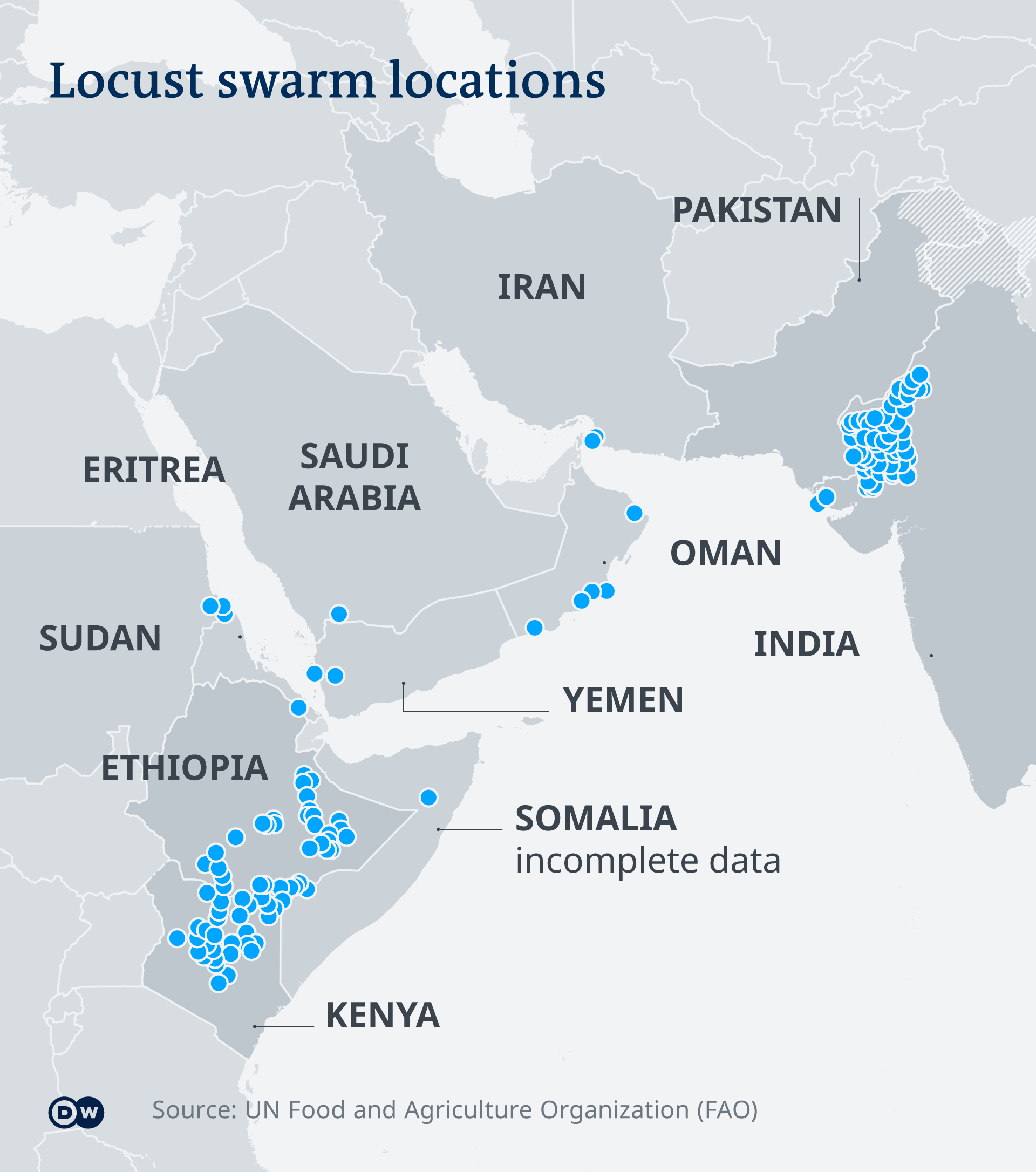East Africa braces for more locusts

Desert locusts have been ravaging East Africa. The UN’s Food and Agriculture Organization warns of a food crisis. The main response has been spraying the areas affected with pesticides. But more needs to be done.
Bernard Makanga’s farm was invaded by desert locusts. ”Normally by this time, these beans, they’re ready for harvest. But the locusts have destroyed them all,” he told DW. His neighbor Francis Muliungi’s crop is equally devastated. ”There is nothing left to harvest. And there is nothing else that I know how to do. It’s just this farm. That’s where I get food, where I feed my family and friends, all people,” he said.
This is the worst infestation that Kenya has seen in 70 years. Many farmers in the affected regions have lost their crops. Some have started planting again, but they don’t know what they will do if the locusts return, which at this point looks very likely, according to environmental experts.
A second generation of the insects is already threatening to swarm Kenya and other parts of the region, including Ethiopia, Somalia, Tanzania, Uganda and South Sudan.
More conflicts

The locusts are putting extra stress on regions already battling problems such as food insecurity and armed conflicts, raising the specter of more violence to come. Tobias Takavarasha, representative in Kenya of the UN Food and Agriculture Organization (FAO), said: “That danger exists, to the extent that there is a risk wherever there are shortages of food.” He added that the situation could degenerate into conflict “if that is not taken care of.”
The Kenyan newspaper Daily Nation reported that the locust invasion in Samburu is ”threatening to trigger conflicts over grazing fields among pastoralist communities.” In rural Somalia, 50% of the people depend on animals for their livelihood. And in South Sudan 6 million people were already suffering food shortages before the locusts arrived. Experts believe that South Sudan is particularly ill-prepared to deal with the invasion.
Spraying the locusts
International agencies are scrambling to contain the swarms, mainly by spraying pesticides. Critics say that this can be just as dangerous as the plague itself in the long run, as the poison is liable to enter the food chain and also kill other insects besides locusts. ”This is where we have experts to assure that the pesticides that are procured to spray the locusts are the correct ones, that they are internationally approved and registered, and that they are effective,” Takavarasha said.
Spraying pesticides is the main response to the locust invasions
The FAO representative said there were three levels of preparedness, including ensuring the availability of food and equipping farmers to enable them to start planting again when the season comes. The first level, though, is ”the capacity to control the invasion of the locusts,” Takavarasha said. “That includes accessing where the locusts have been sighted.”
Funds needed
Access remains a problem. Some points of origin are located in crisis hot spots such as Somalia. Large parts of the country are under threat, or controlled by al-Shabab. The international community is trying to negotiate access with the extremist group.
A 1-square-kilometer (0.4-square-mile) swarm can eat as much food in one day as 35,000 people. Locusts can also travel up to 200 kilometers (120 miles) per day. And they reproduce very quickly. The response needs to be just as quick, something that has yet to be understood by the international community. Dominique Burgeon, director of the FAO’s Emergency and Rehabilitation Division, told DW that there is an appeal out for $76 million (€70 million), but so far the organization has received only $30 million. ”We have a very short window of opportunity,” Burgeon said. “We are in between two planting seasons. We need to control the locust population now, before the planting season starts in March/April. This is the main planting season.”
The locusts eat everything in their way and reproducevery quickly
The climate factor
Climate experts have pointed to unusually heavy rains, aided by a powerful cyclone off Somalia in December, as a major factor in the outbreak. Niklas Hagelberg, senior program coordinator at the UN Environment Programme, told DW that scientific data did not yet directly link the current events with climate change, even if he “personally” believes in the possibility. ”What we can say is that the likelihood for increasing rainfall, increasing heat, increasing winds, has gone up due to climate change,” Hagelberg said. “So the likelihood for a swarm like this has increased.”
Spraying with pesticides is an emergency measure. In future, other steps need to be taken to improve the response to similar outbreaks. ”I think a key element from a climate change point of view is that we have early warning systems,” Hagelberg said. “Because the system is changing, we need to get early warnings on conditions for the formation of swarms as early as possible, which would make a timely and concerted international reaction possible.”
Source: DW





